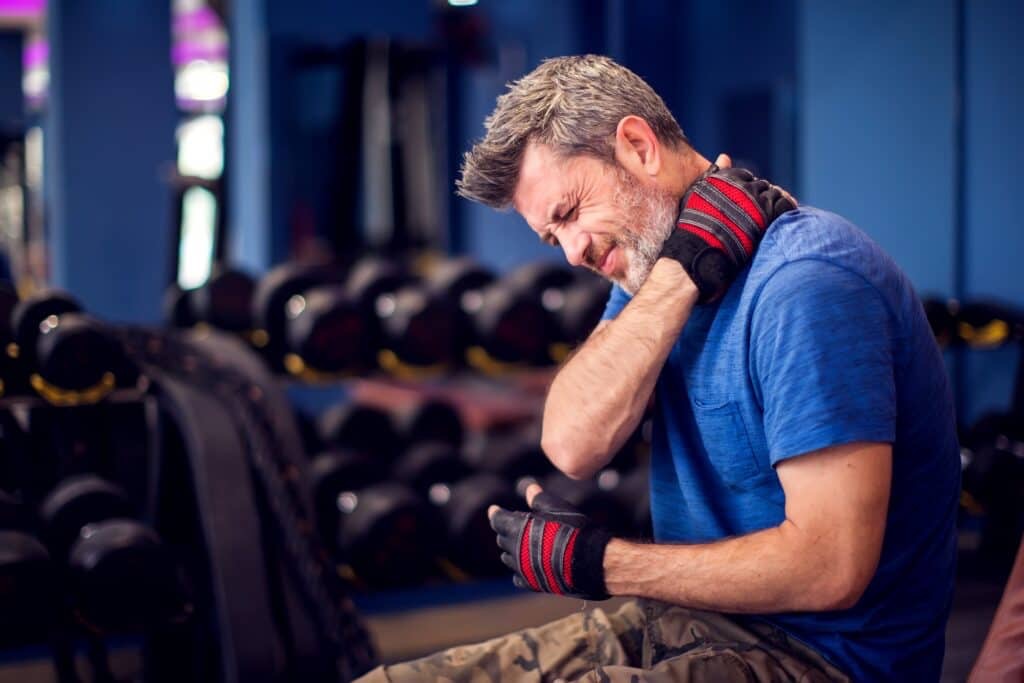In this post we discuss why you get shoulder pain at the gym and what you can do to resolve it.

So you’re at the gym pressing some dumbbells when you notice discomfort around your shoulder.
Ok no problem you think, I’ll just leave that for a few days and let it recover.
The following week you go back to the same exercise and things are no better. Not only that, you notice that a pulldown seems to bother your shoulder as well now.
Ok ok you think, perhaps a bit more rest will help. You decide to focus on your lower body and a couple of arm exercises for the moment.
Even picking up the dumbbells from the rack takes a little consideration now however, as your shoulder seems no better.
You bite the bullet and visit a physio.
They tell you it’s some tendon or another that’s angry and give it a rub. You’re sent away with an exercise using an elastic band.
You try the exercise at home the next day but if anything it seems to make the angry thing even angrier.
Not only that, your knee is now hurting from all the lower body work you’re doing in the gym. You’re fast running out of exercise options.
So what’s going on? You thought exercise was supposed to be good for you. How come it’s making you feel worse?
Is there something wrong with you?
Why you get shoulder pain at the gym
The very fact I’m able to write something that closely matches your experience demonstrates how common this is.
Even people who work with trainers aren’t immune.
Exercise requires you to apply force to your body in order to stimulate an adaptation.
In the case of resistance training this adaptation is stronger muscles.
When things go wrong the issue is usually this;
Too much force has been applied too quickly and your body hasn’t had the chance to adapt.
The big problem with force is you can’t see it.
The number on the weight gives you a clue, but how far that weight is from the joint it’s challenging and how fast it’s moving will have an impact.
So great you’re probably thinking, that’s how I messed myself up, how do I get out of this situation?
The long term solution to shoulder pain at the gym
Each of your muscles has a tolerance for force.
The solution is to increase this tolerance with targeted exercises.
And to do this without making the stuff that hurts worse.
This requires an accurate assessment of your muscular system to locate the priorities.
And an understanding of force so you can apply the right dose to the muscles that need it.
Naturally this is best done by somebody who knows what they’re doing (hint).
That said, you can make progress if you apply the following principles:
• Restrictions in range of motion will lead you to muscles that need attention.
• Always use exercise to increase range of motion rather than stretching.
• Make sure every exercise you perform takes place within a range of motion you can control.
• Focus on single joint exercises where possible.
• Never work through pain. Work around it.
Summary
Shoulder pain caused by the gym can be frustrating and confusing.
The cause is invariably related to force however.
Providing there is no structural damage, the solution is to find which muscles need attention and carefully begin to load them.
This is best done under the guidance of a professional, but if you prefer to have a go yourself this series of posts may help.